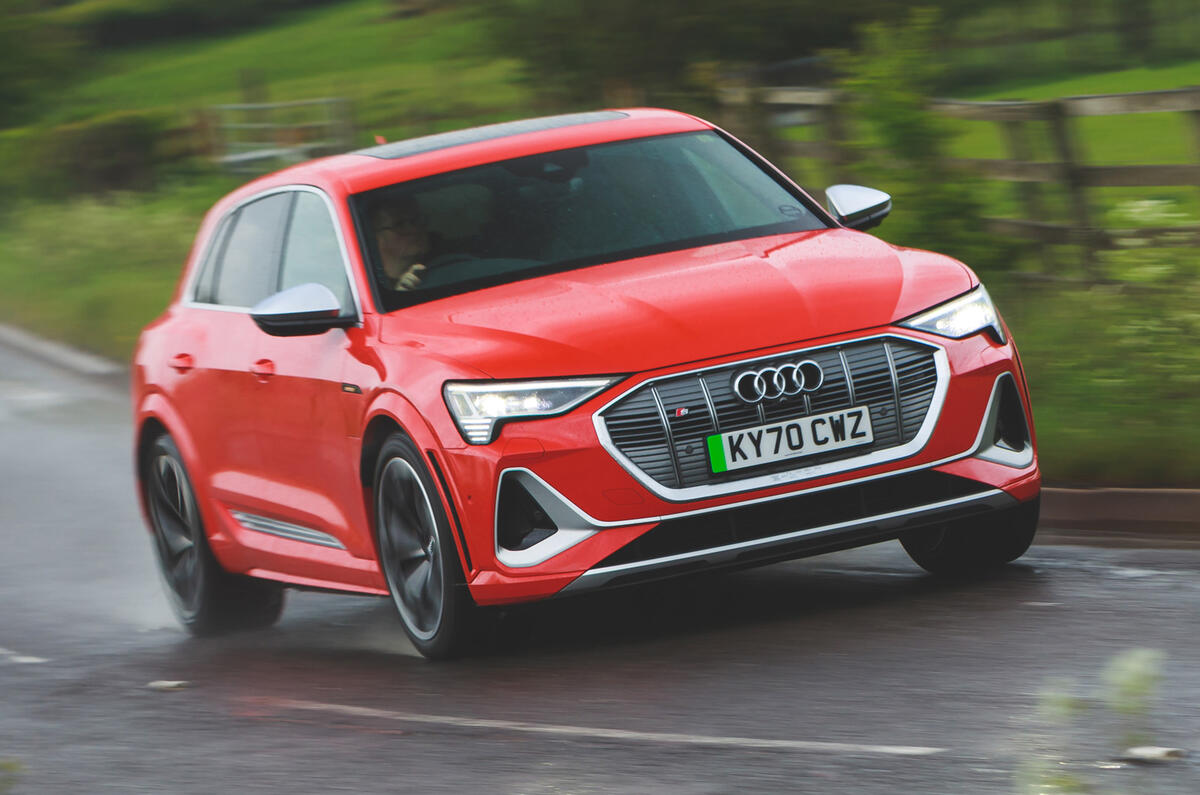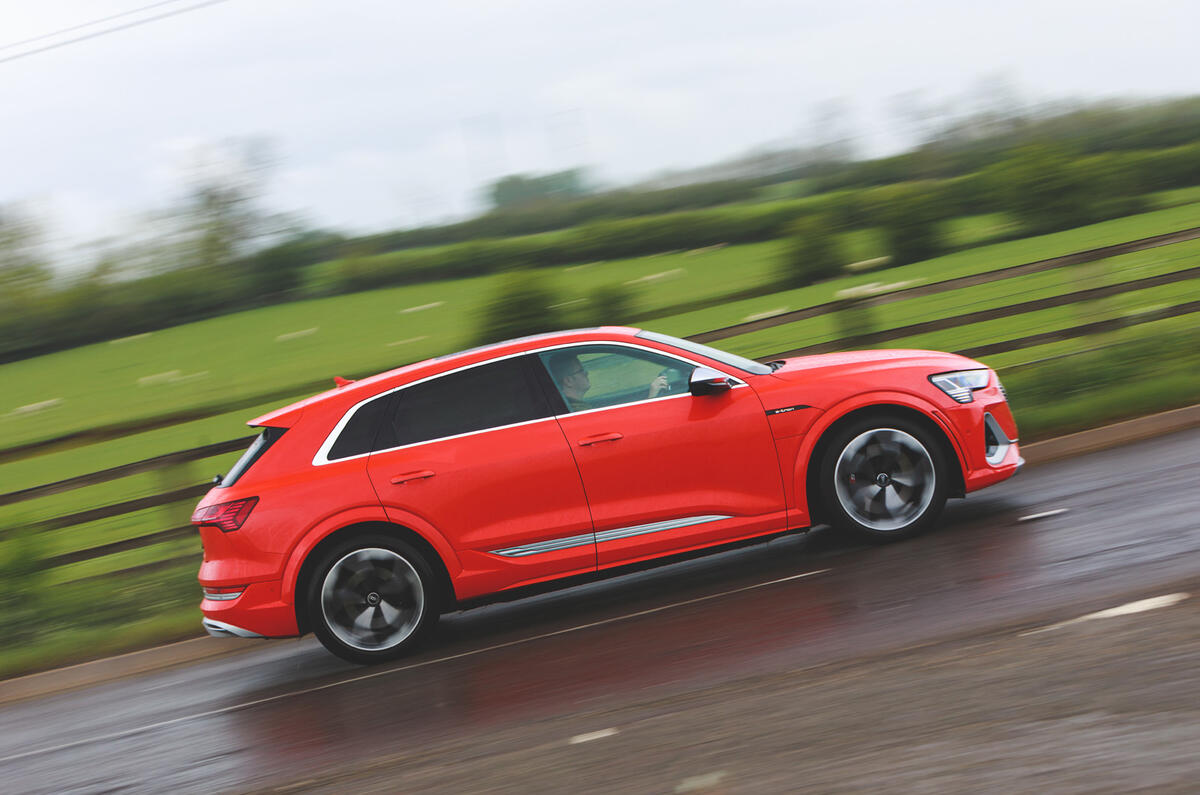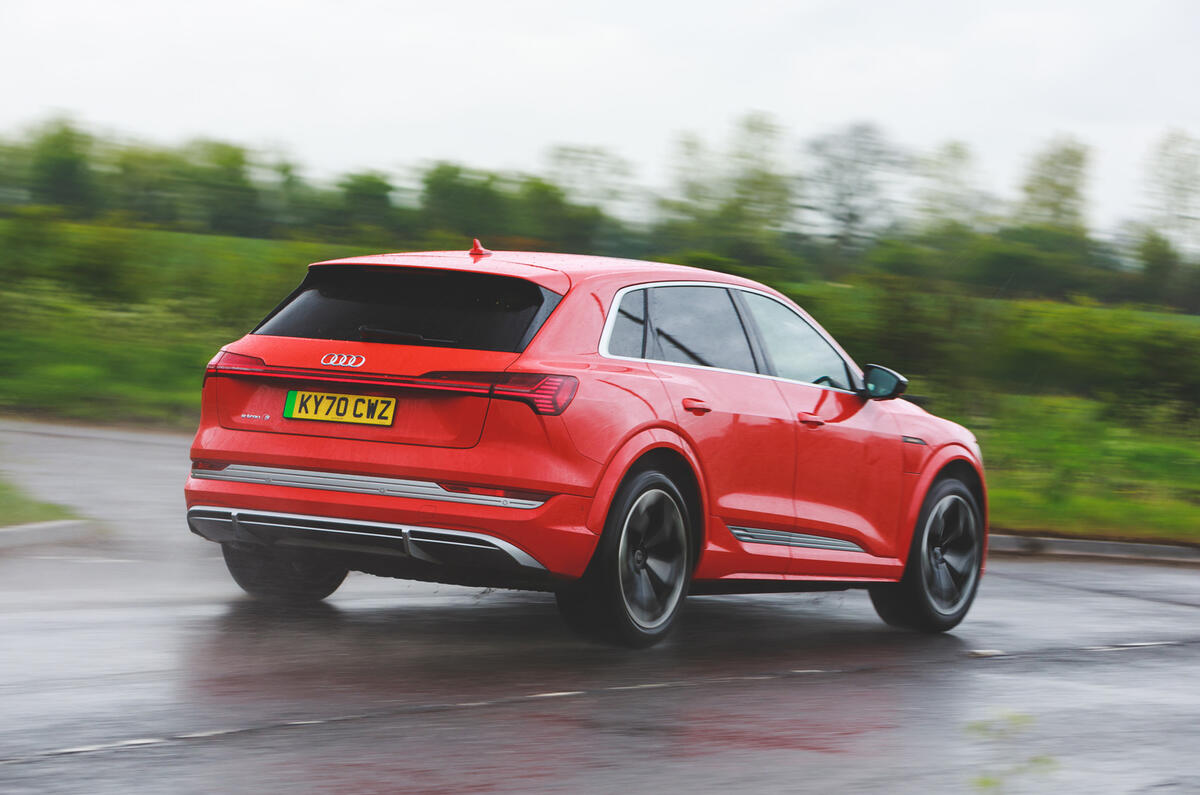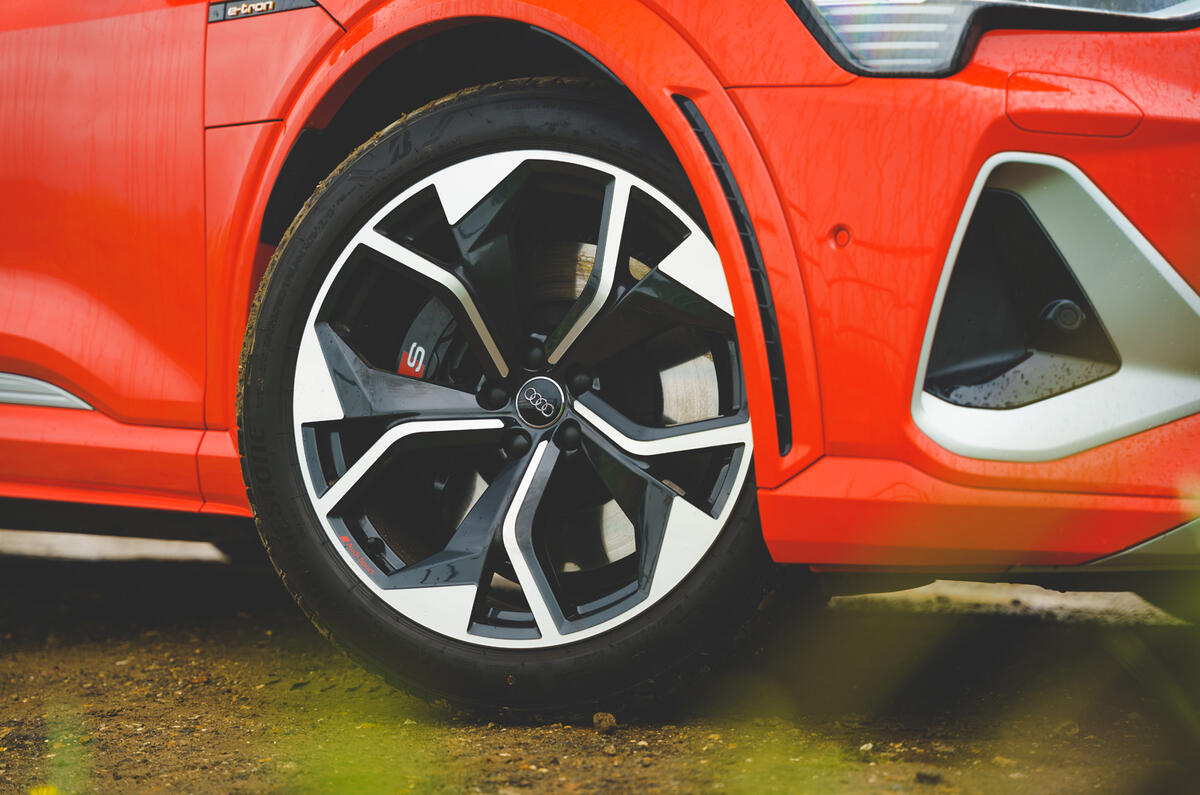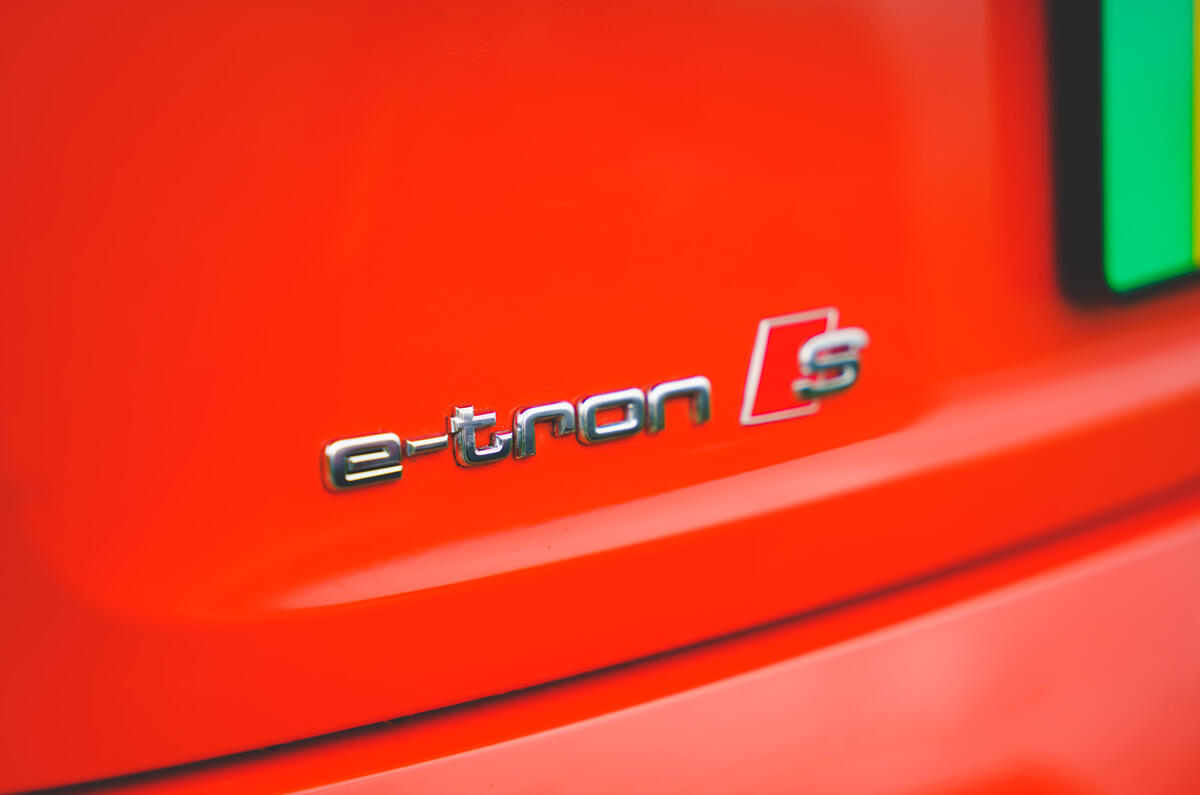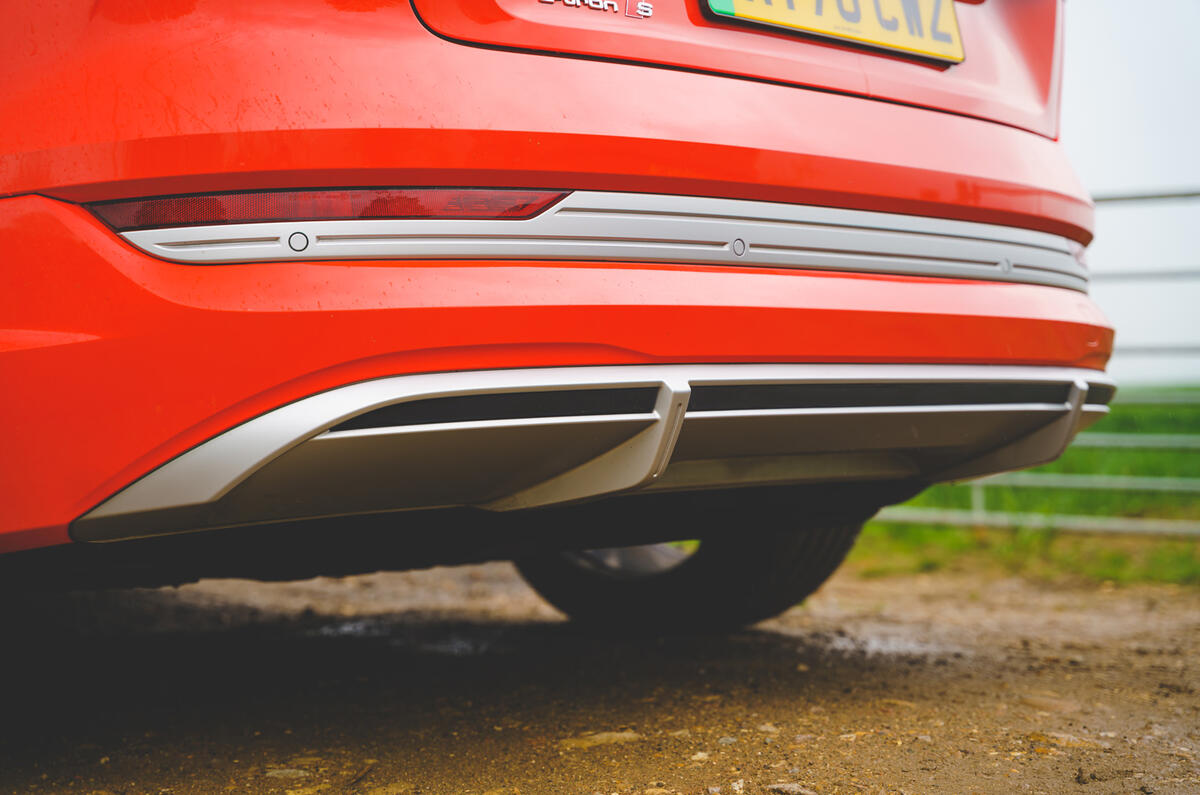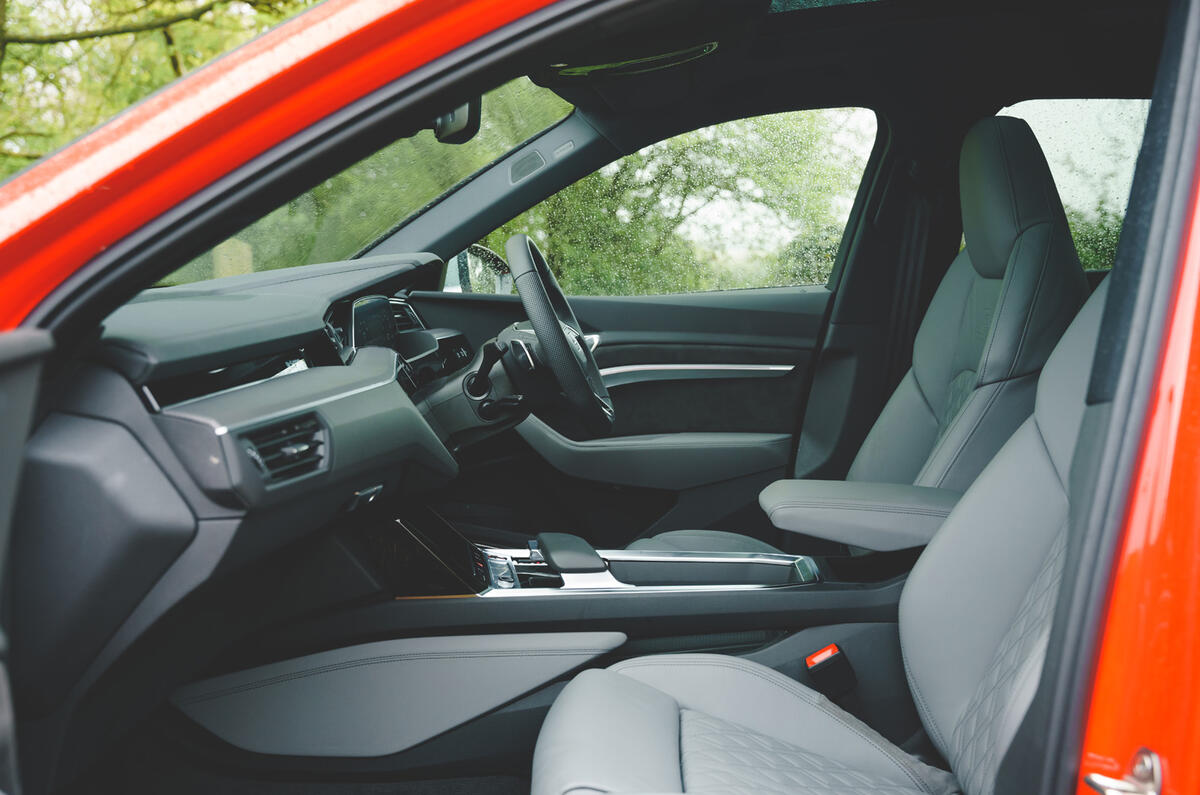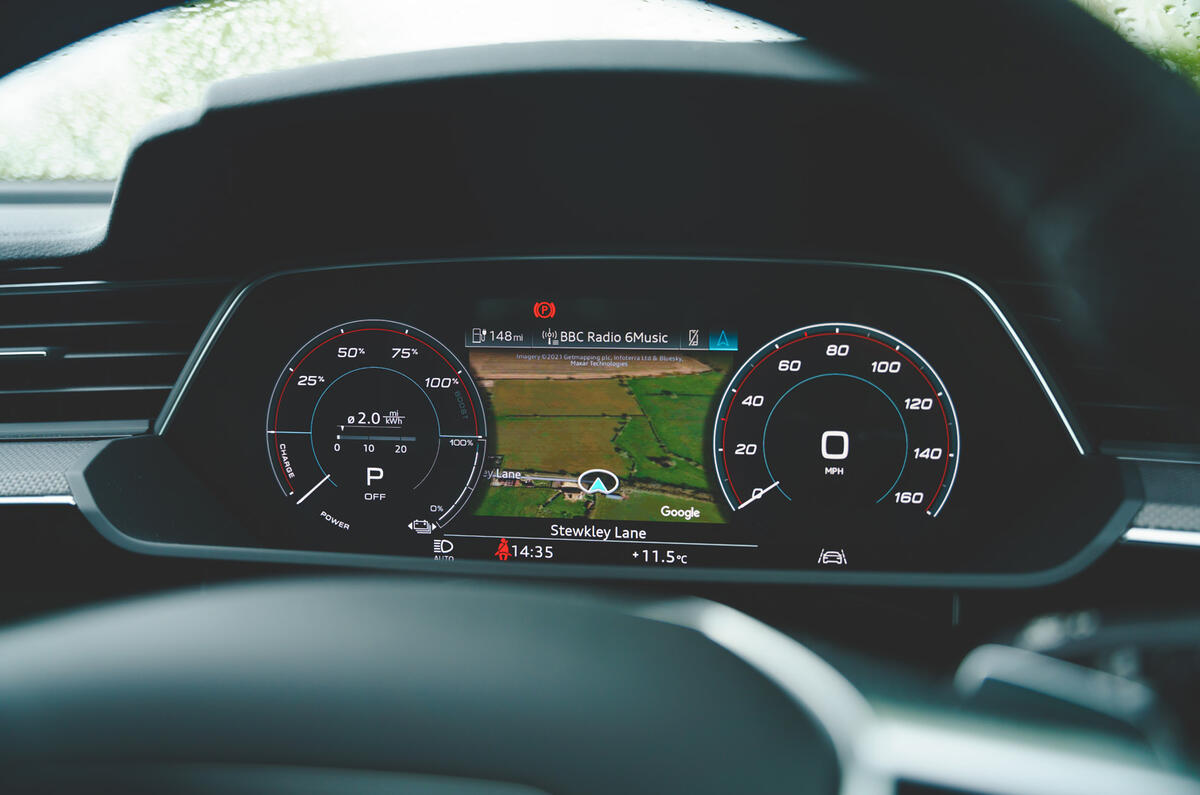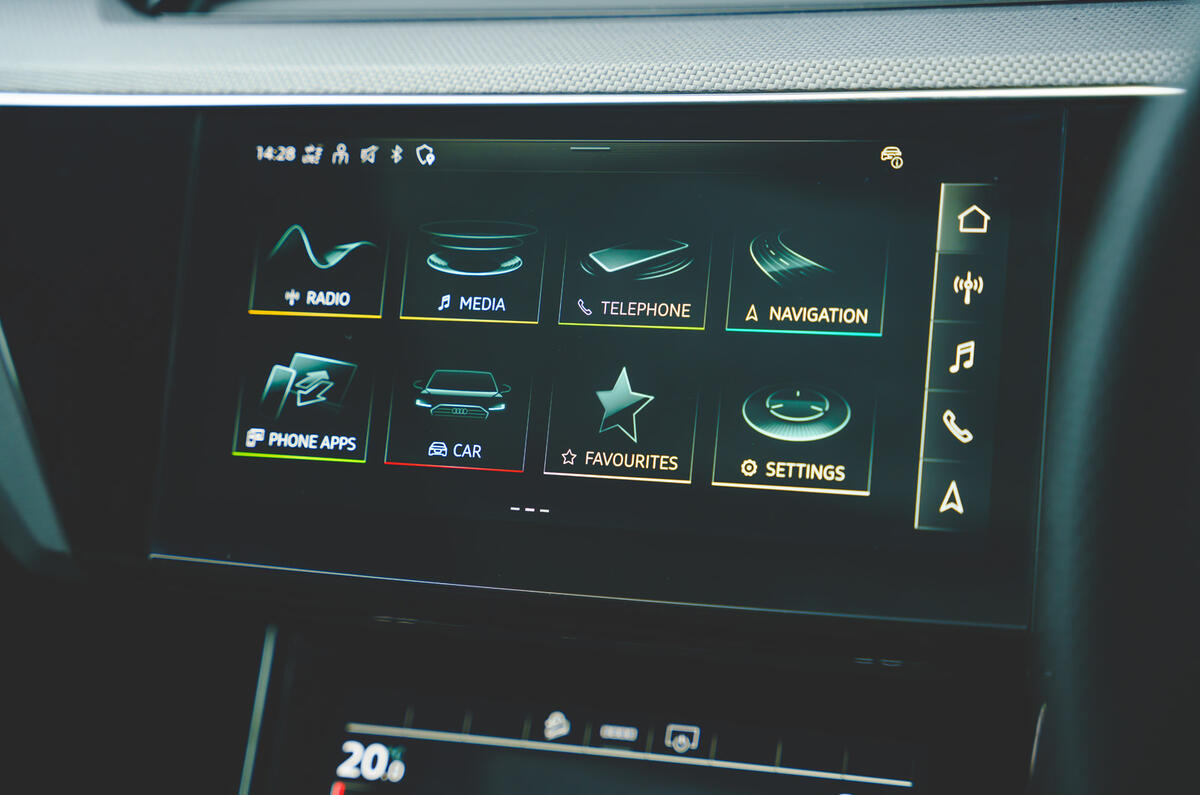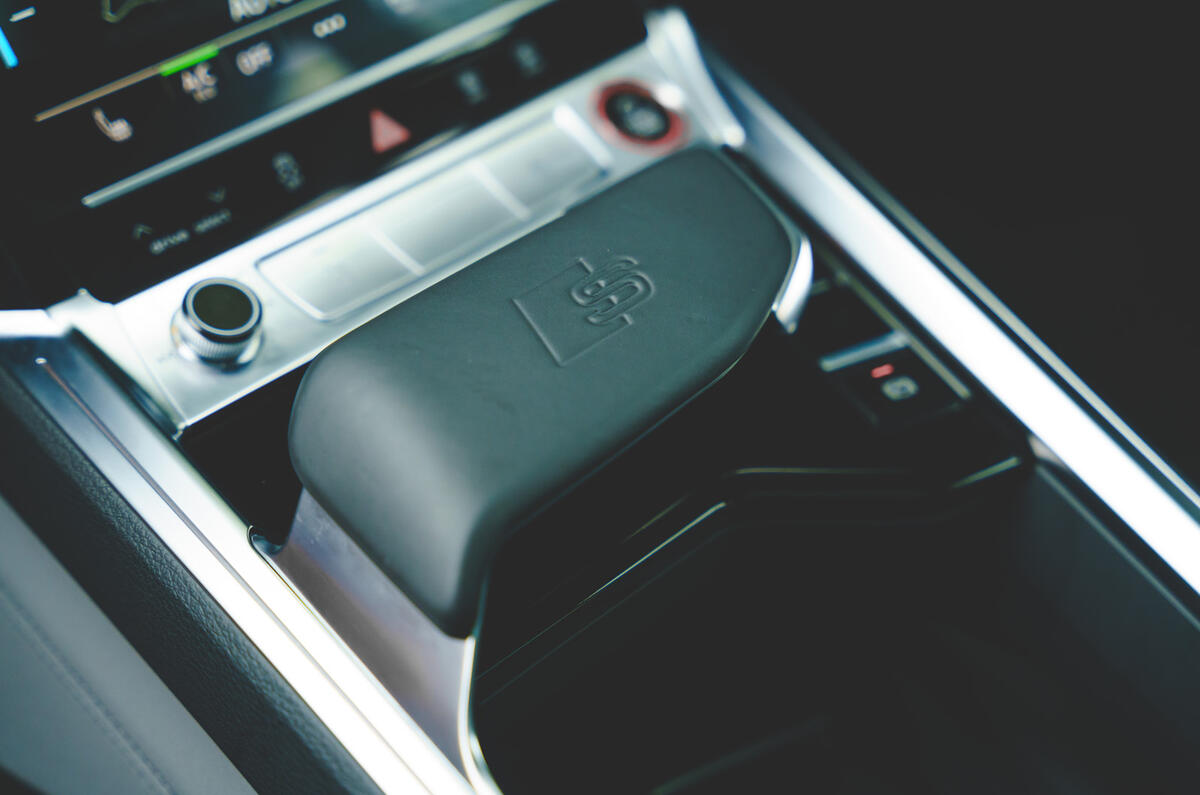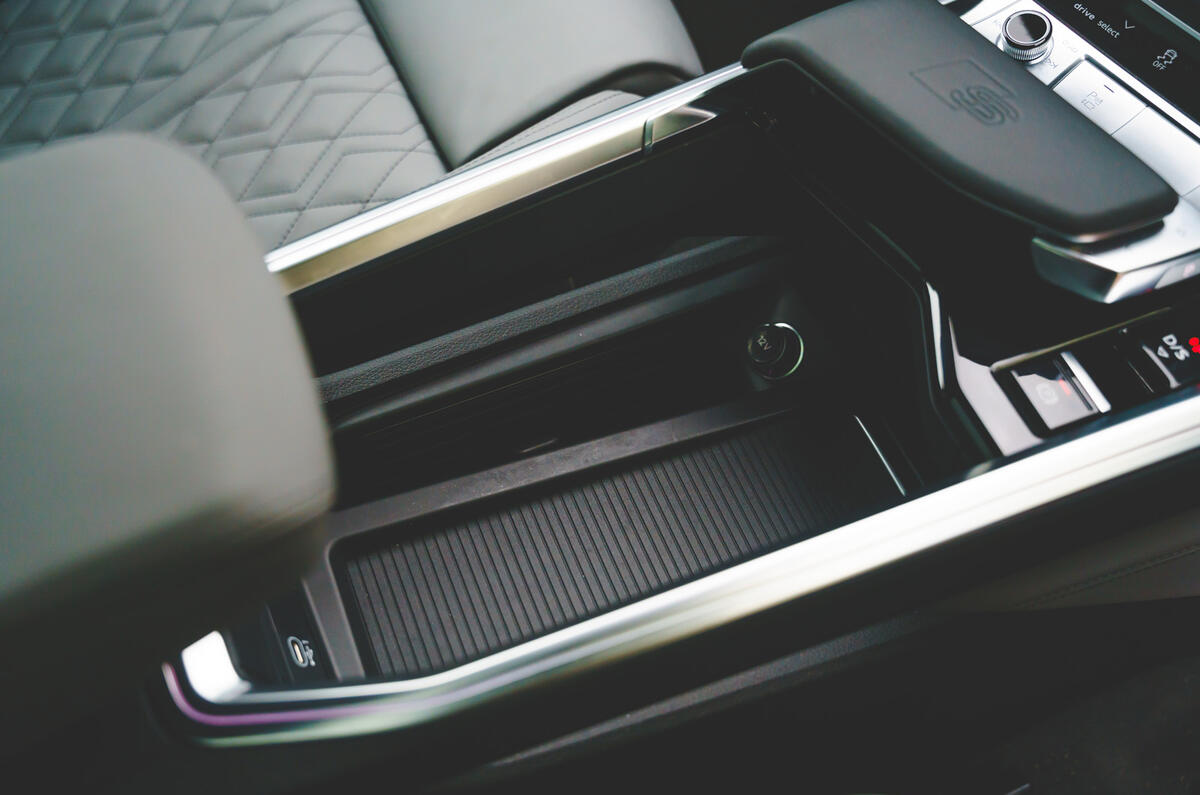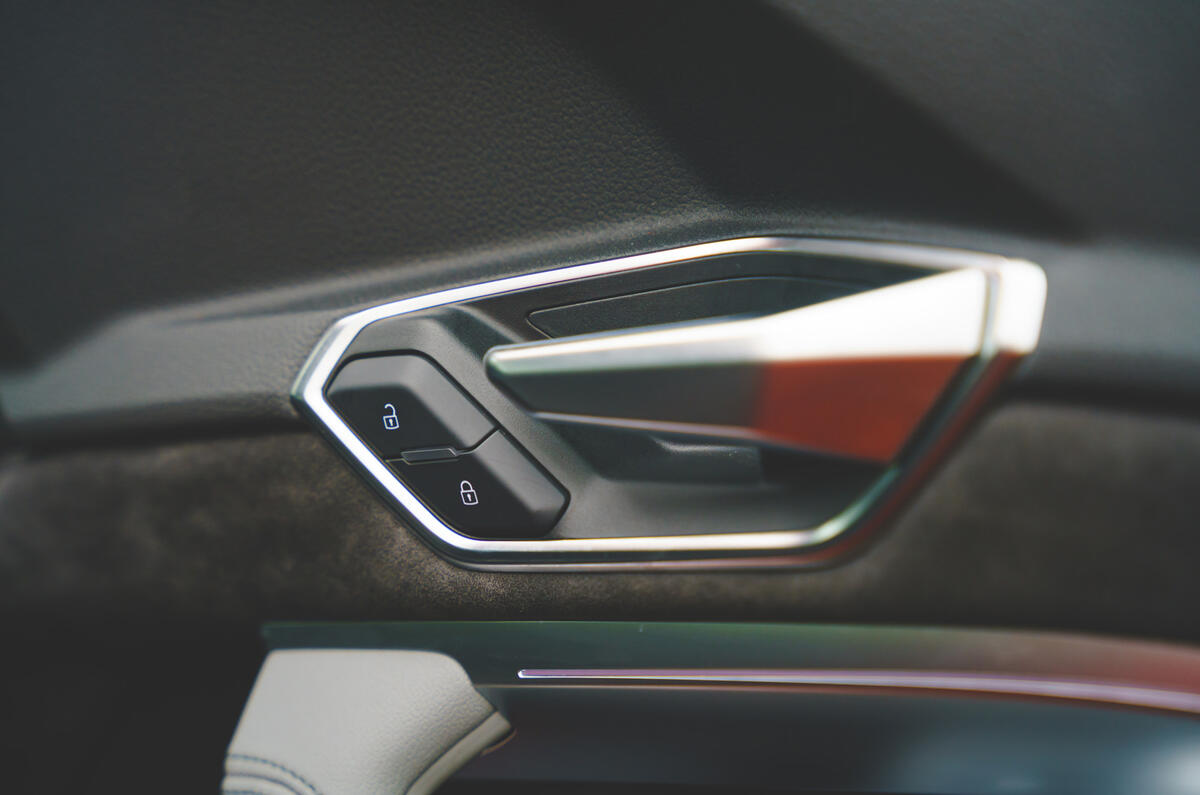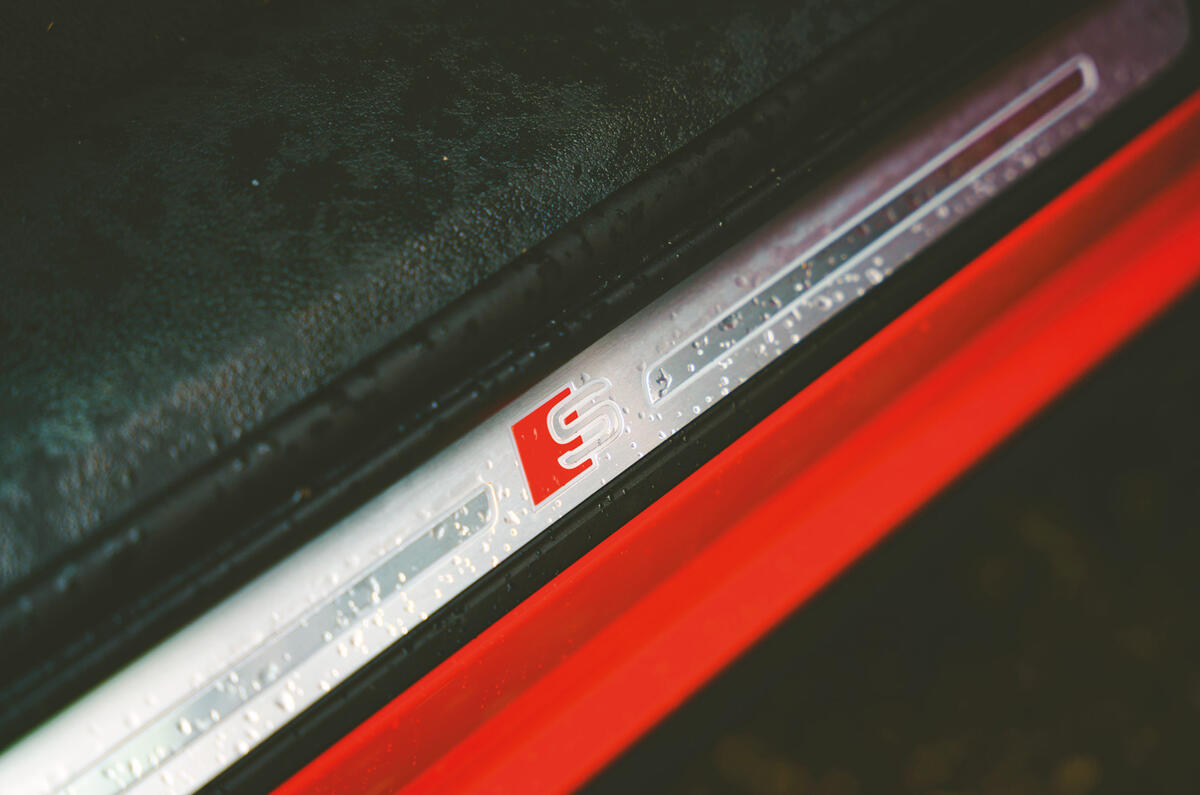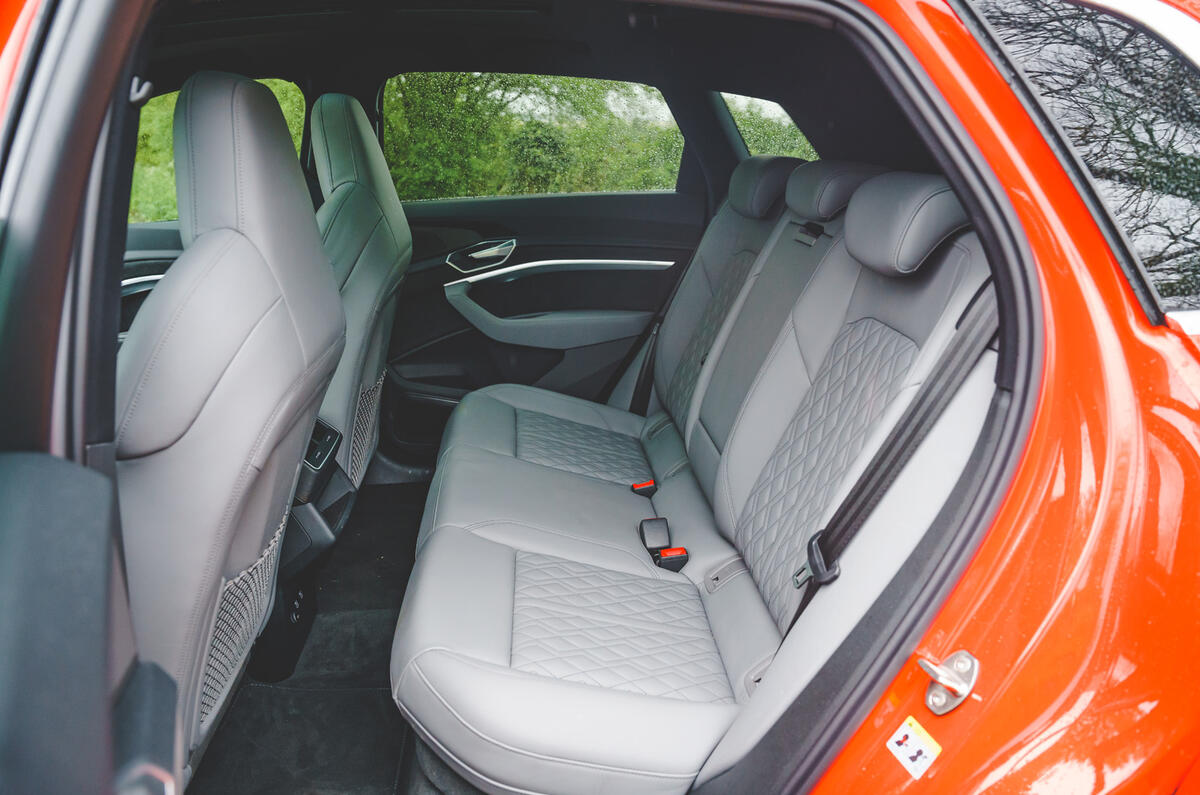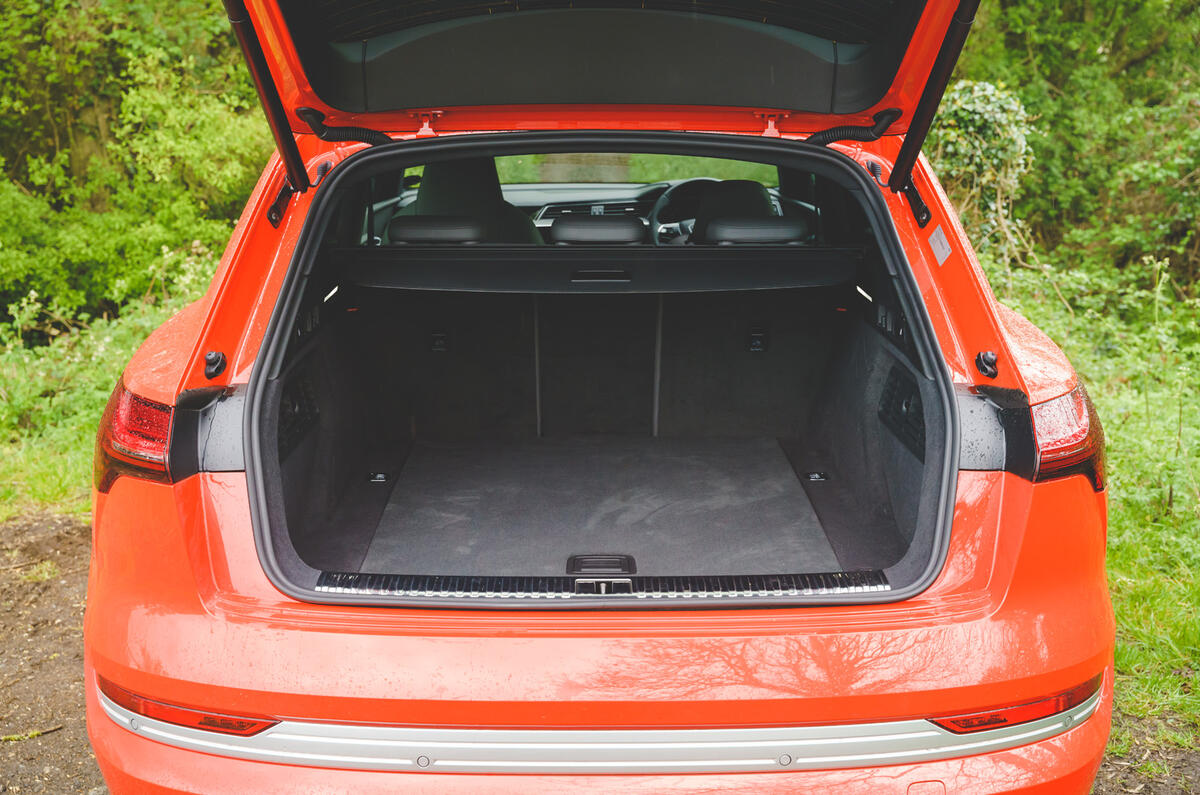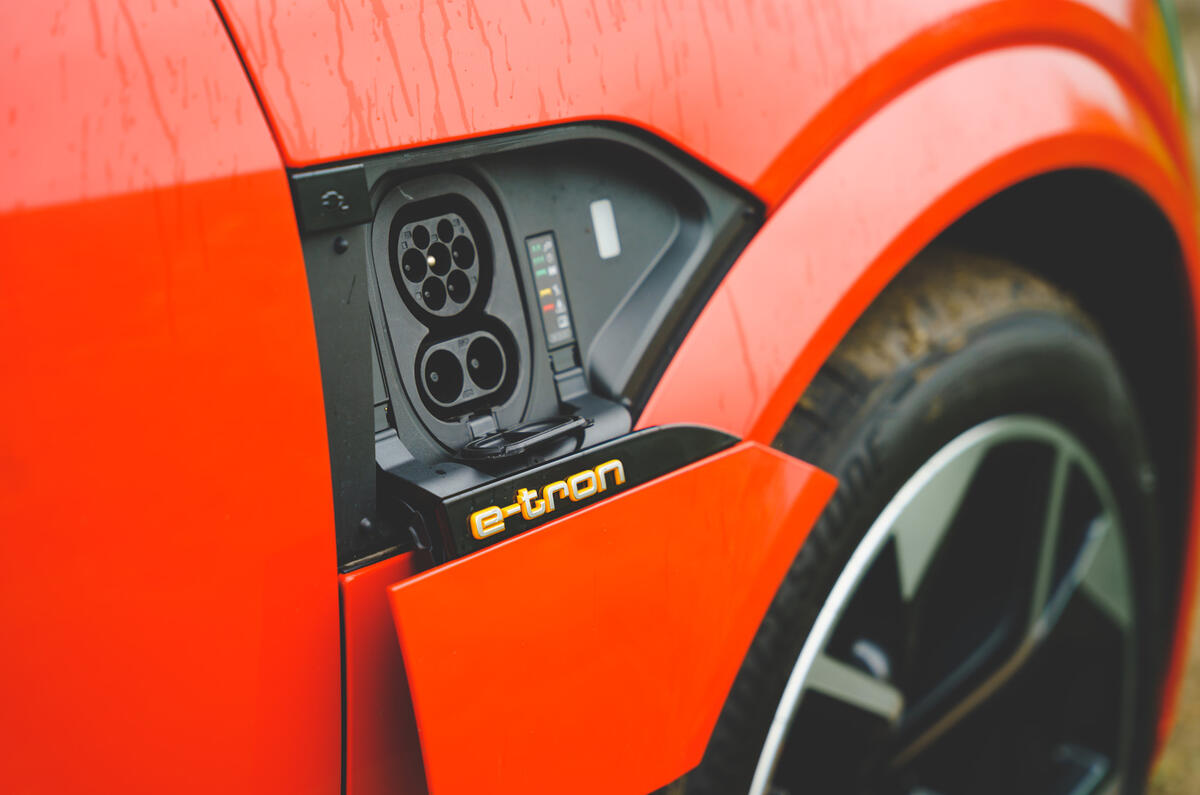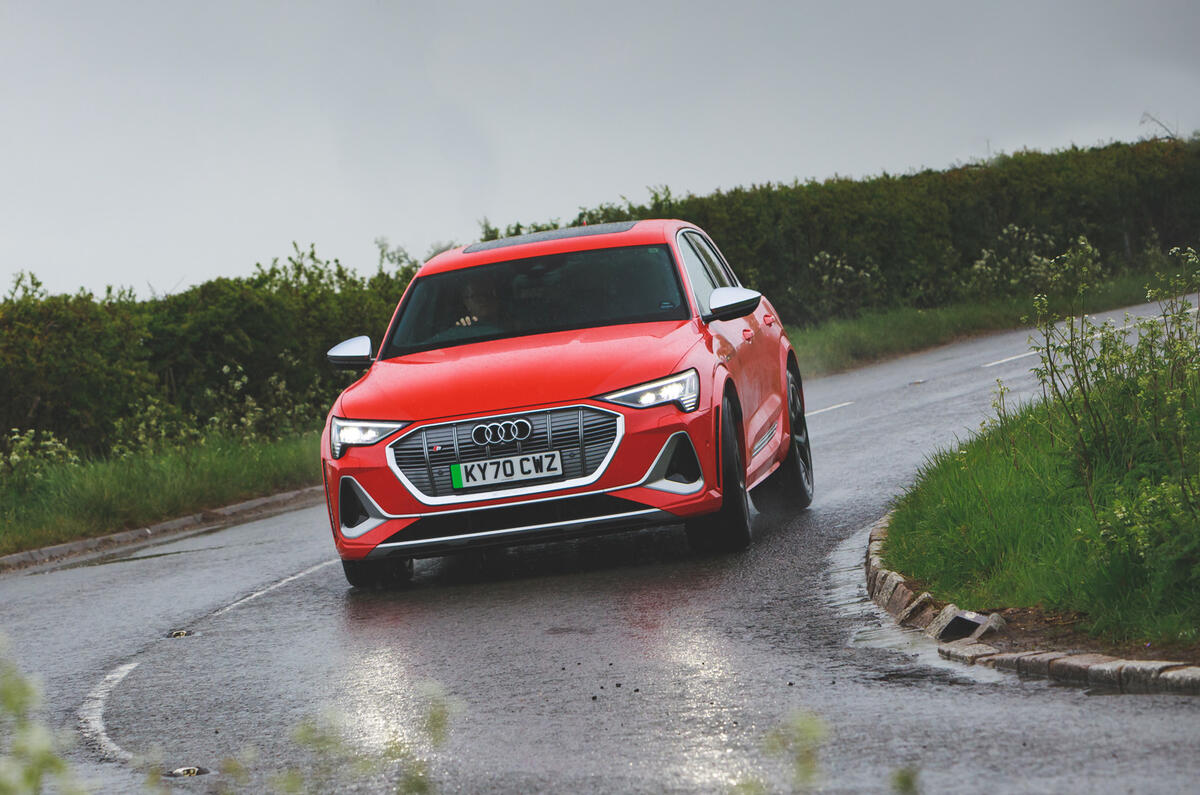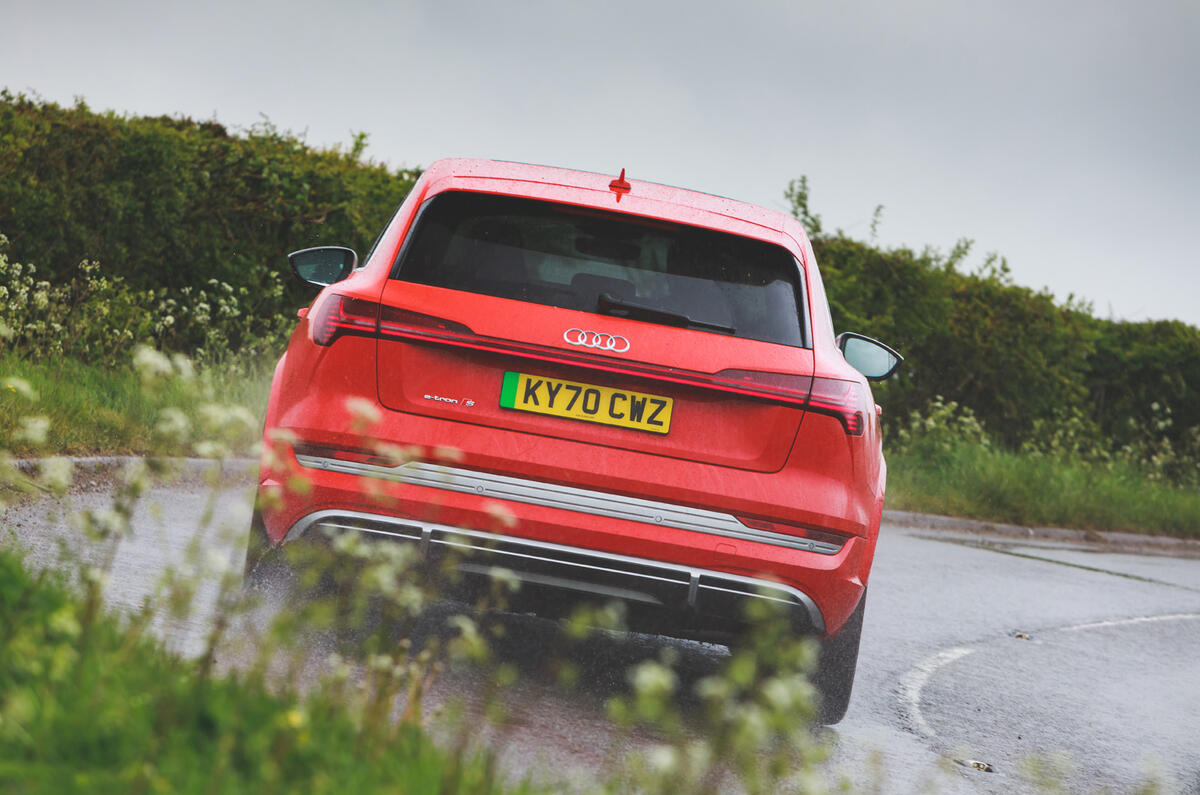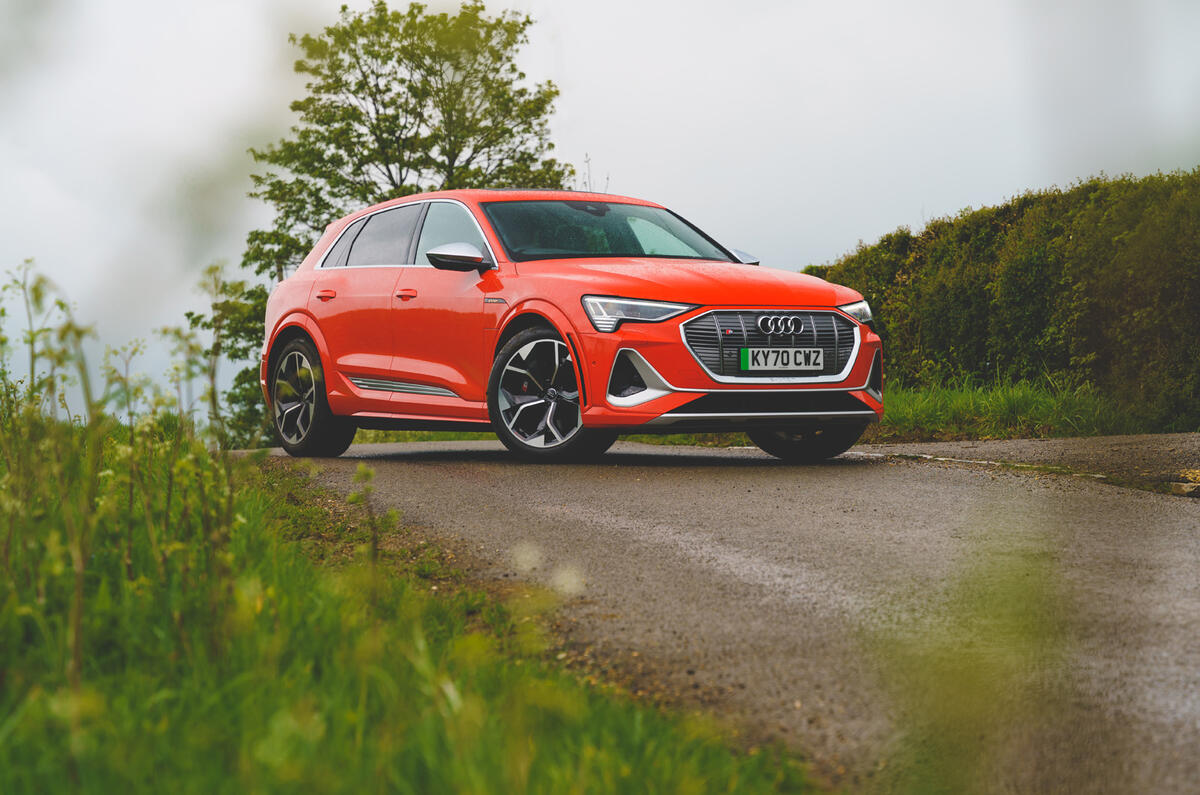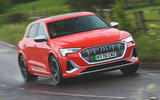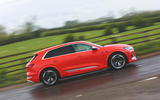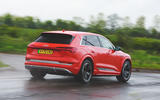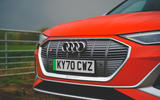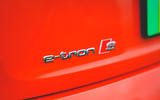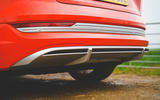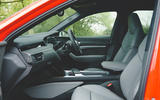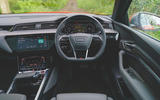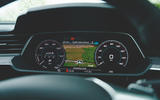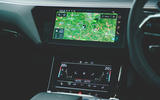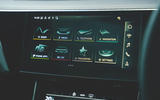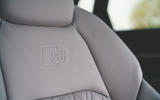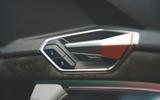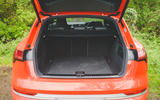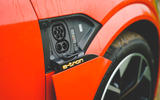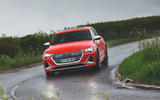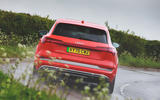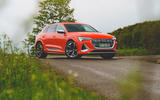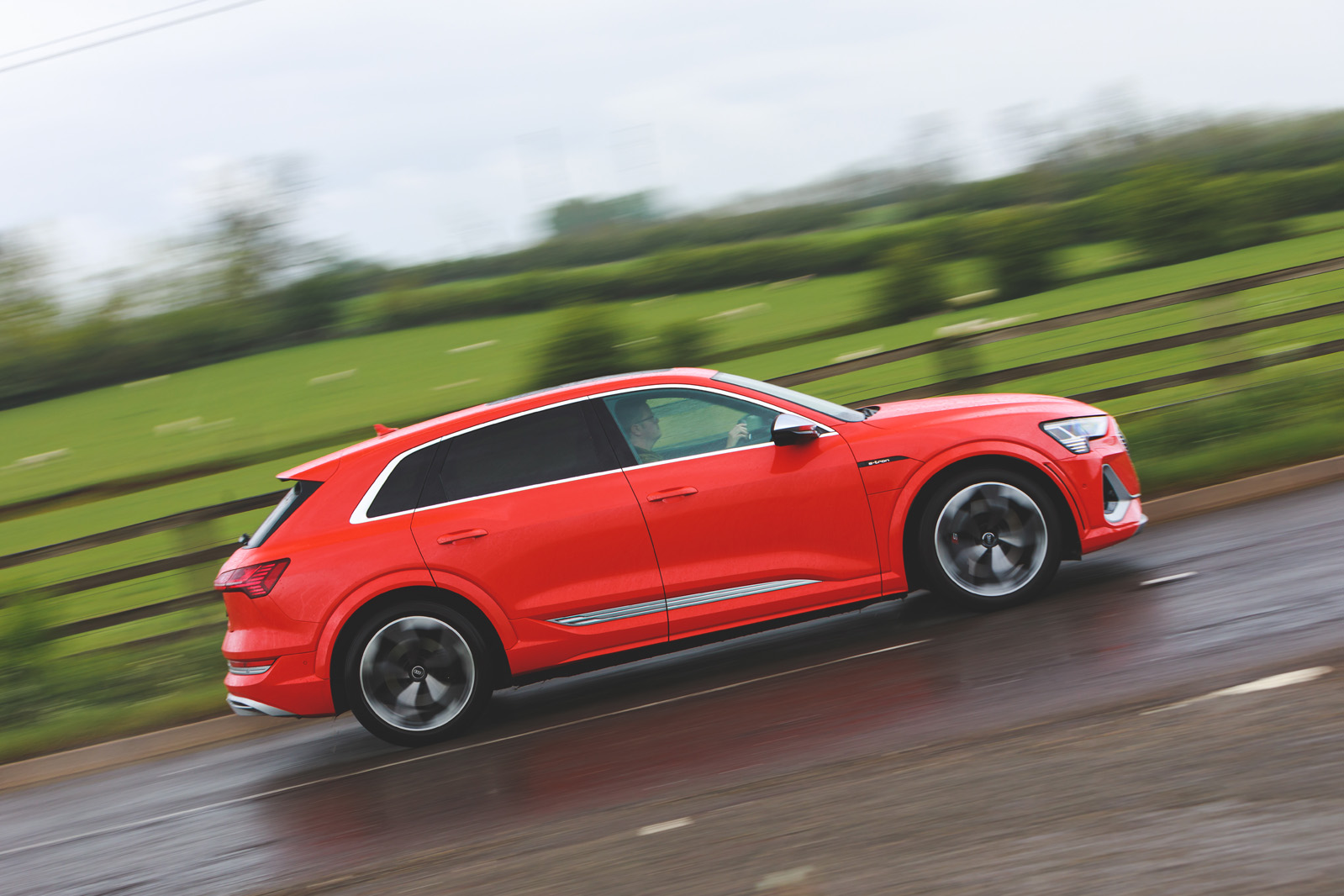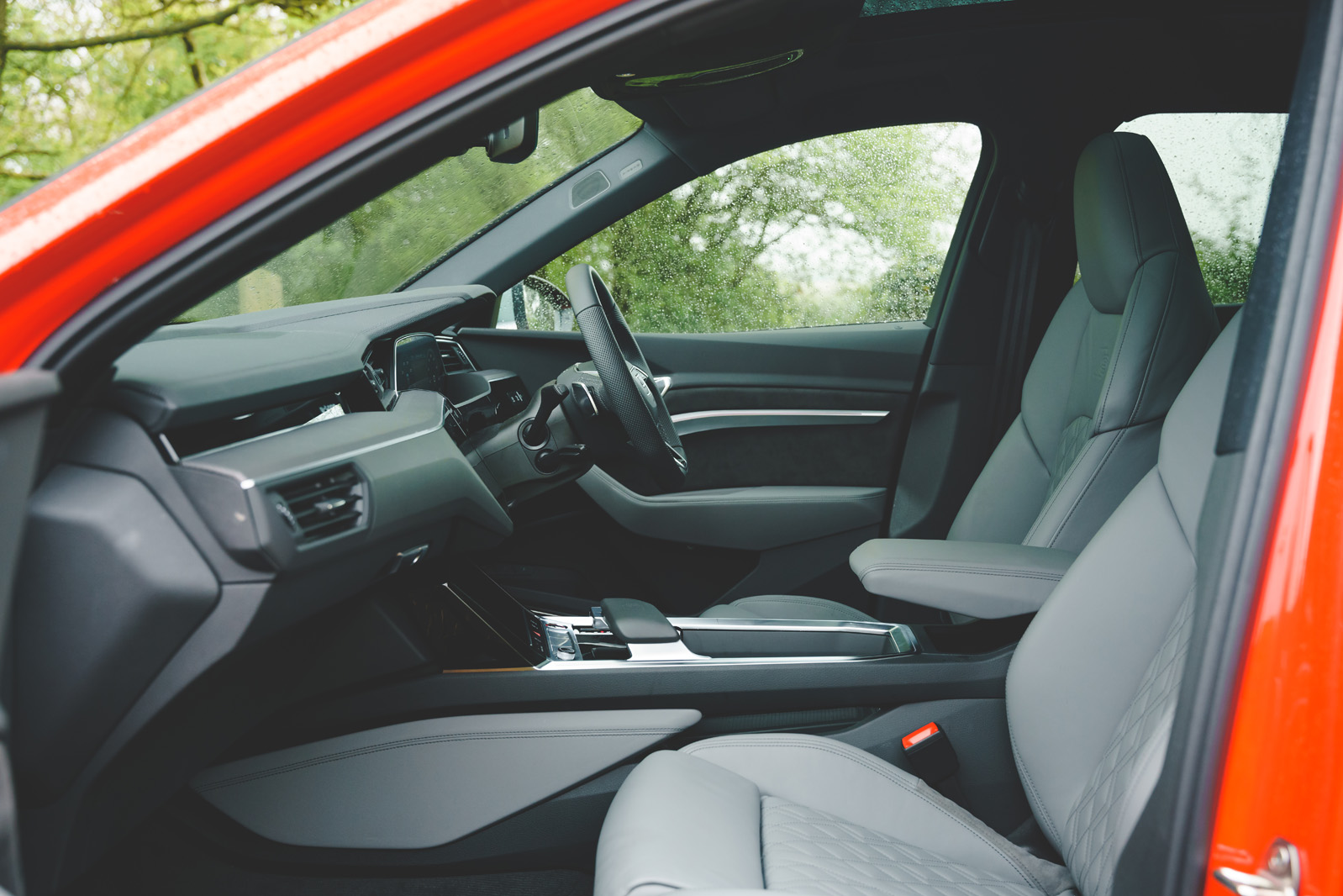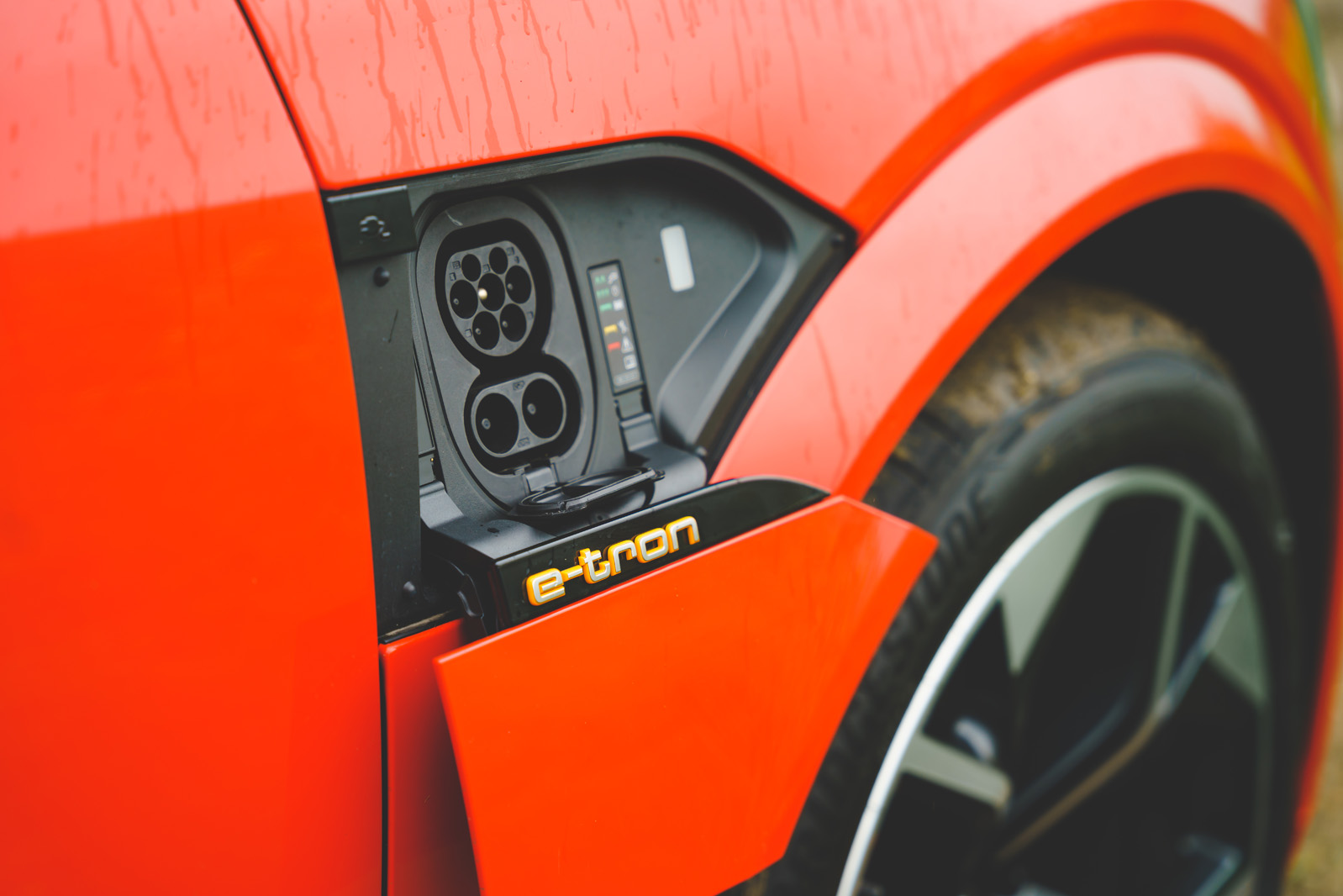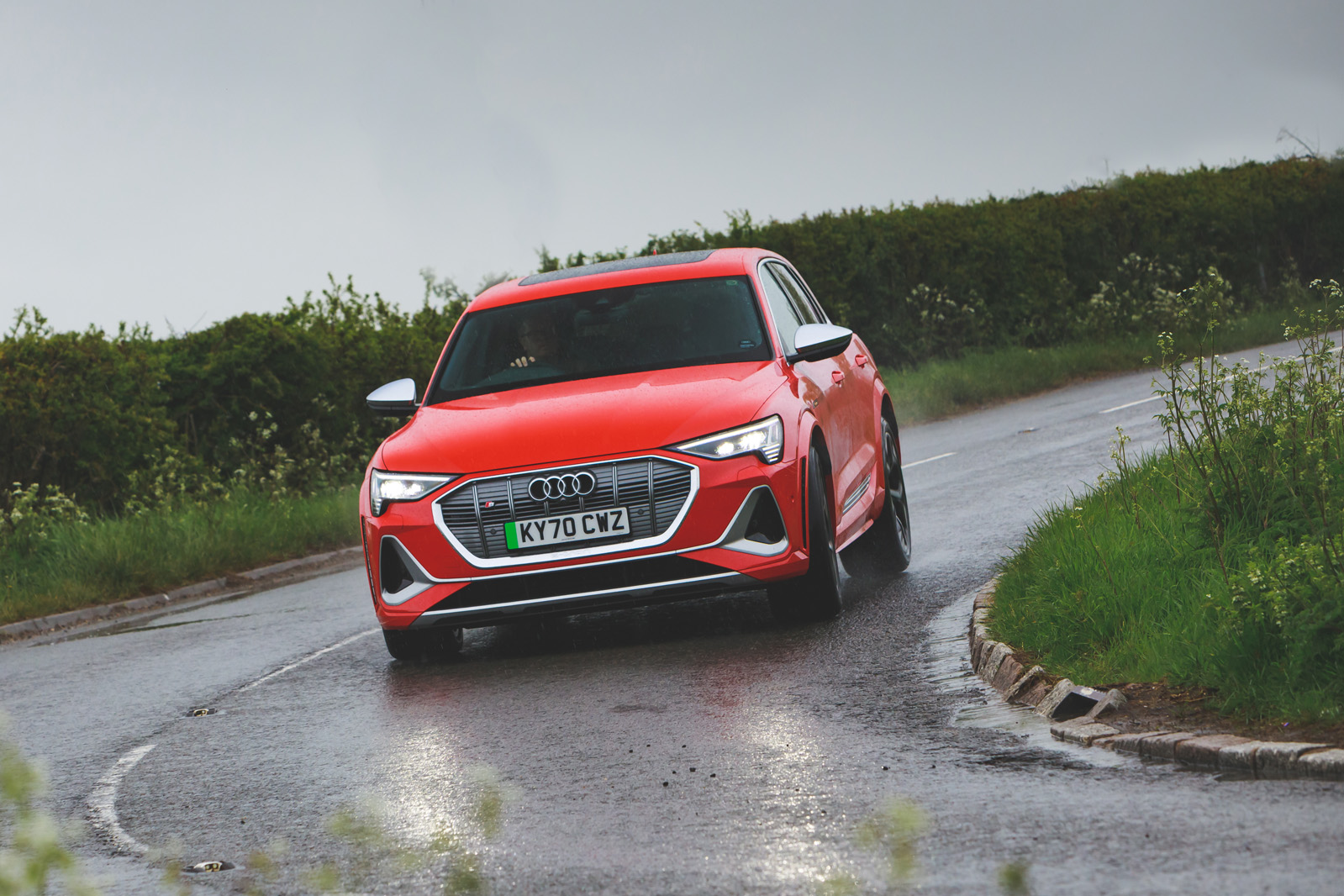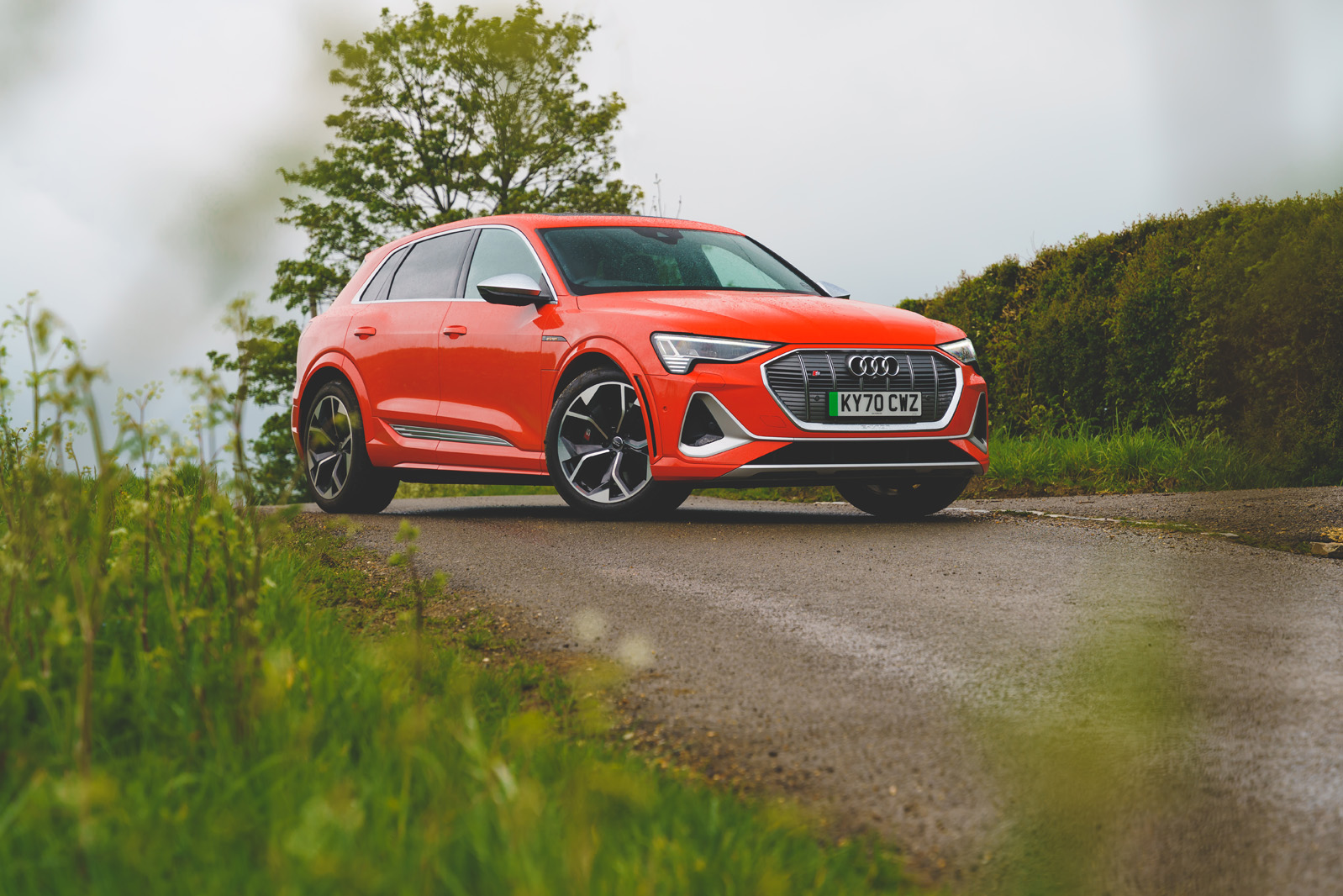But if it’s a tighter corner you’re negotiating, and you’re using Dynamic driving mode with the ESC dialled back (in which setting the car’s torque vectoring is at its boldest), you’ll find that once the E-tron S has signalled its limits by nudging into stabilising understeer, you can neutralise its cornering posture very easily with power. And then, in a safe environment needless to say, even make it maintain power oversteer, with regular dabs of positive steering angle and without absurd commitment levels.
Some 2.6 tonnes of drifting electric Audi SUV is a novel thing to comprehend, let alone experience first hand. It’s just a shame that you have to drive this car so hard to know that it’s got that secret weapon; and that the rear axle doesn’t work harder to enrich the handling in everyday driving, when the E-tron S is pleasing and composed, but seldom thrilling.
The E-tron S always handles like a big car, even when it’s rotating underneath you mid-corner. Turn all the electronic aids off and, having first gently pushed on, the chassis will pivot dependably into power oversteer at the limit of grip.
In slippery conditions, however, the drivetrain and tyres need a moment longer than you might first expect to create meaningful traction in the direction that car is newly pointed. It’s the inevitable result of the inertia that the car carries. In that respect, the E-tron S feels a little like a heavily laden trolley moving around a builders’ merchant’s yard; one that’s helping you to steer it, if you like, but that you’re pushing all by yourself.
The Bridgestone Alenza tyres don’t have a particularly commanding grip level, but plenty of safety margin is delivered by the stability and traction control systems when they’re left on, so driving the car quickly and securely is easy when you want it to be.
Comfort and isolation
When we road tested the regular Audi E-tron two years ago, the car’s refinement and isolation really set it apart. The effect of putting bigger wheels and some stiffer suspension componentry on the E-tron S was always likely to compromise that feel a little, but it hasn’t hobbled this car by any means.
At a 50mph cruise on a wet day, our test car produced just 62dB of noise in the cabin, a decibel more than the regular E-tron 55 managed but still a very creditable result for a full-sized luxury car. A Jaguar I-Pace, tested in more favourable dry conditions in 2017, was another decibel noisier again.
The car’s ride is cushioning over sharper edges when you use the longer-travel suspension modes and is generally quiet over coarser, open surfaces. There is a touch more weight to the steering than you typically find in luxury Audis, and perhaps less filtering of steering forces evident through it. You can feel, for instance, the steering weight up a bit when the car’s mass shifts forwards, no doubt partly because there’s so much mass to shift. Most testers liked the more connected feel that resulted, though.
The E-tron S’s driving position is only medium high. Taller drivers will still need to bend a little at knee and waist when boarding, and few will climb up to get in. Visibility is good to all quarters, and the car’s conventional door mirrors (Audi’s camera-based virtual door mirrors are a £1250 option not fitted to our test car) are of a usefully large size.


